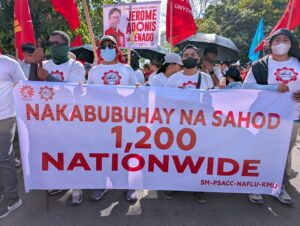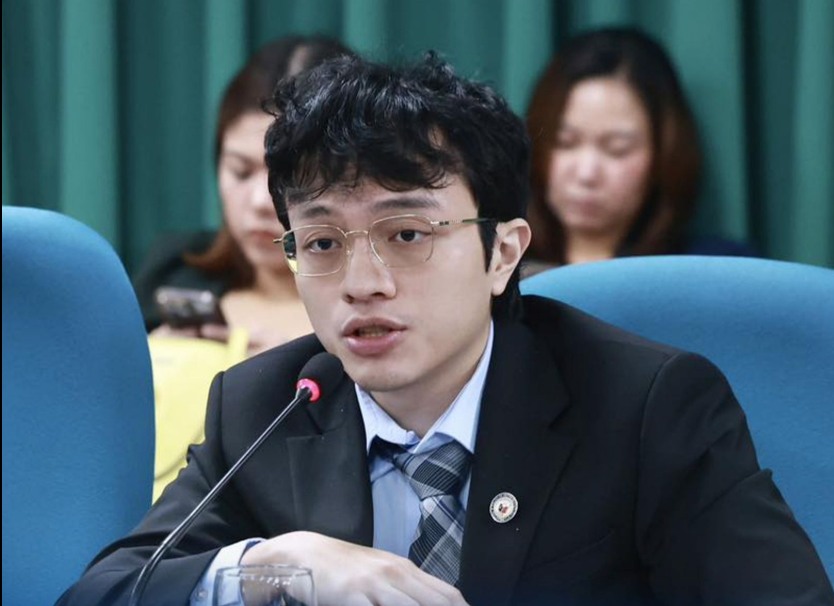📷: KMU |FB
The National Economic Development Authority (NEDA), which has been renamed after it was elevated into a department, should have been tagged as the National Economic Prophecy Authority (NEPA) for its annual crystal ball divination, with all its predictions sinking as fast as they are announced.
Chief economic planner Arsenio Balisacan apparently has the same genes as his predecessors, one of whom triumphantly declared that the Philippines was on the “precipice” of becoming middle-income country even as it was grappling with the Covid-19 pandemic and successive disasters. The good bureaucrat forgot that a “precipice” is hardly an inch out of cliff. Unconsciously, some say it’s a Freudian slip, the eminent economist apparently was talking of an economic retreat.
And it came to pass, rather than the economy galloping along the path of victory, all metrics pointed to slowdown, with the projected improvement in the GNP becoming a myth. With Balisacan, the myth is recycled and the “precipice of hope” is once again deluding the number crunchers who have never been correct about the economy, just like the Friedrich Hayek acolytes who still think the Philippines is autarkic and who wish that the minimum wage would go away for being a disincentive to foreign investors.
In the latest of the Madam Auring economic crystal ball oracle, Dr. Arsenio Balisacan welcomed on April 29, 2025 the assessment of the World Bank (WB) that the Philippines could achieve upper-middle-income classification by 2027, which is less than two years away. As defined by the WB Country and Lending Groups (WB-CLG), lower middle-income economies are those with a gross national income (GNI) per capita between $1,136 and $4,465. Those in the upper middle-income economies have GNI per capita between $4,466 and $13,845 and high-income economies are those with a GNI per capita of $13,846 or higher.
WB placed the GNI per capita income in the Philippines as of 2023 at $12,200 out of a total GNI of $1.401 trillion and GDP per capita at $34,804.87 based on GDP of $437.1 billion. These are fairly big numbers if you ask the 70% of Mindanao respondents who said in the first quarter of 2025 that they are poor, or even the 45% in Metro Manila, where the salaries are higher and more job opportunities are offered, who have admitted they are poor. In short, the glowing figures touted by WB are a mile removed from realities on the ground as more and more people now confess that they have to queue up for rice at P20 per kilo rather than purchase fragrant Thai jasmine rice (developed with the help of UP Los Banos and the International Rice Research Institute (IRRI.) The WB experts might have been wrong, and, indeed, the Bangko Sentral ng Pilipinas (BSP) sought the ouster of some of the expat economists over their reading of the country’s financial health.
Perhaps, there might have been studies conducted by the Development Academy of the Philippines (DAP) that support the WB projection but even with the sanguine hope that the country will be an upper middle-income country 20 months away, the truth is that Thailand’s GNI per capita is higher at $22,940 and Vietnam is ahead at $14,190. Both countries have lesser populations than us and both of them can adequately feed their own people. Vietnam exports the biggest volume of rice to the Philippines. By spending billions of dollars importing food from Vietnam, the US, Australia, New Zealand as well as fish from China that were caught in the West Philippine Sea (WPS) and the Spratlys Islands, the road to become an upper middle-income country presents more hurdles.
There might be a confusion on the part of NEDA on what really constitutes an upper middle-income economy. True, a country can exploit its factor endowments like land, forests, seas, minerals and metal ores, put in hydropower and geothermal energy sources, abundant crops and fisheries and aquatic resources and put to good use an educated work force, but how do you compel plutocrats to invest their money not in Singapore, South Africa, Malaysia, Hong Kong or in their family offices and offshore accounts in Singapore, British Virgin Islands, St. Kitts and Nevis, and other financial havens? Even the Maharlika Investment Corp. (MIC) is pushing for the creation of more agricultural estates and luring Mideast and other foreign investors to plunk in their money. The plutocrats are busy chopping up the country into their enclaves, as what Ramon S. Ang has been doing in Palawan, Bulacan and other areas.
Becoming an upper middle-income economy requires higher wages, which the state is reluctant to provide, a bigger industrial sector that manufactures anything from food products to capital goods, an integrated agricultural sector that produces high-value crops (HVCs) and food for both the domestic and foreign markets, an extractive industry that processes the ores and earns the country more foreign exchange. It means an overhaul of the entire economic system in which labor power is paid decently, where government does not squander funds for medical, health, social and educational services. It is an economy that must efficiently use 40% of the national budget that is squirreled by grafters and vested interests. In short, it is something that NEDA does not contemplate. ( DIEGO MORRA)




